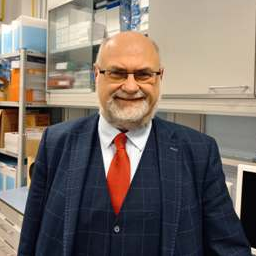Complex Molecular Mechanism of Monogenic Diseases 2.0
A special issue of Current Issues in Molecular Biology (ISSN 1467-3045). This special issue belongs to the section "Molecular Medicine".
Deadline for manuscript submissions: closed (31 March 2024) | Viewed by 5945
Special Issue Editor
Interests: gene expression regulation; DNA replication; bacteriophages; plasmids; human genetic diseases; neurodegeneration
Special Issues, Collections and Topics in MDPI journals
Special Issue Information
Dear Colleagues,
This Special Issue is a continuation of our previous Special Issue “Complex Molecular Mechanism of Monogenic Diseases” (https://www.mdpi.com/journal/cimb/special_issues/CIMB_monogenic).
Monogenic diseases are defined as genetic disorders caused by mutations in single genes. Therefore, one could assume that their mechanisms might be relatively simple, as a defect in one gene should cause dysfunction of just one protein or functional RNA molecule. However, recent studies have indicated that molecular mechanisms of monogenic diseases are significantly more complicated. Dysfunction of one gene product results not only in the inactivation of just one biochemical reaction, but a network of various reactions is affected. Then, secondary and tertiary effects sometimes lead to dysregulation of various cellular processes, including the up- or down-regulation of the expression of many genes, and disturbance of the physiology of cells, tissues, organs, and whole organisms. We are only at the beginning of understanding the complicated molecular mechanisms of monogenic diseases. The complex character of such diseases is a biological puzzle and causes real problems for the development of effective therapies. The current number of known monogenic diseases is estimated to be about 7,000, and only a few can be specifically treated. Moreover, the vast majority of these diseases are severe disorders, and patients suffering from them need novel effective therapies. Development of such therapies is, however, dependent on a detailed understanding of the mechanisms of each disease. Therefore, this Special Issue is focused on research conducted to understand complex molecular mechanisms of monogenic diseases. Both original papers, presenting clinical or experimental studies (using cellular and/or animal models) on understanding pathomechanisms of such diseases, and review articles, summarizing our knowledge and proposing new hypotheses in the field are welcome. The submission of papers exploring the unexpected complexity of, or newly discovered, changes occurring as consequences of dysfunctions or dysregulations of single genes is particularly encouraged.
Prof. Dr. Grzegorz Wegrzyn
Guest Editor
Manuscript Submission Information
Manuscripts should be submitted online at www.mdpi.com by registering and logging in to this website. Once you are registered, click here to go to the submission form. Manuscripts can be submitted until the deadline. All submissions that pass pre-check are peer-reviewed. Accepted papers will be published continuously in the journal (as soon as accepted) and will be listed together on the special issue website. Research articles, review articles as well as short communications are invited. For planned papers, a title and short abstract (about 100 words) can be sent to the Editorial Office for announcement on this website.
Submitted manuscripts should not have been published previously, nor be under consideration for publication elsewhere (except conference proceedings papers). All manuscripts are thoroughly refereed through a single-blind peer-review process. A guide for authors and other relevant information for submission of manuscripts is available on the Instructions for Authors page. Current Issues in Molecular Biology is an international peer-reviewed open access monthly journal published by MDPI.
Please visit the Instructions for Authors page before submitting a manuscript. The Article Processing Charge (APC) for publication in this open access journal is 2200 CHF (Swiss Francs). Submitted papers should be well formatted and use good English. Authors may use MDPI's English editing service prior to publication or during author revisions.






